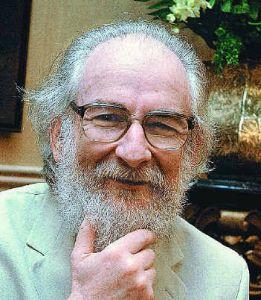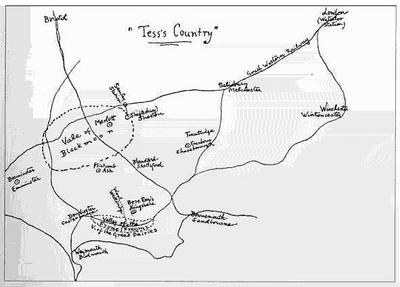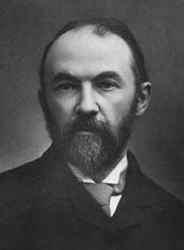Where English can serve but not empower
South Africa's schools should be using the home language of their students as the medium of instruction. This multilingual approach to education was made law in 1997, and is intended, among other things, to modernise the African languages for routine use in high-status functions. But two fundamental obstacles are standing in the way of this policy. One is a crisis in resources and infrastructure, and the other is a lack of political will on the part of the elite.The result is that by default English (as elsewhere in Africa) is becoming the de facto official language and the only language of teaching and learning. So why should South Africa defend and implement its multilingual language policy, and not give way to an English-only or English-mainly policy?English is currently the dominant language of teaching in South Africa. Indeed for most children from an African-language background almost all education after the first three years of schooling is in English.Equally important is the fact that most schools are staffed by second- or third-language speakers of English, many of whom are not proficient enough in English to serve as good models for their students. There is little doubt that the language issue is one of the main factors explaining the disastrous drop-out and failure rates, which affect mainly black students.The 1997 policy was intended to sustain the home language throughout the educational career of the learner, preferably as a medium, but in any case as a subject. In practice, however, it is not possible for children from an African-language background to receive instruction through the medium of their home language beyond Grade 3 or 4.In fact one of the ineffable ironies of the new South Africa is that the only children who have mother-tongue education (L1-medium) are precisely those who have been advantaged in most other respects in the course of South Africa's history: English- and most Afrikaans-speaking children.Before the first non-racial elections in April 1994 most people assumed that English would become the only, or at least the main language of teaching in educational institutions. This was, after all, what had happened in virtually all ex-colonial African countries in the English sphere of interest. Namibia is the latest example.The dialectic of South African history, however, ordained otherwise. Because of the passionate commitment of white Afrikaans-speaking South Africans to their language, their political representatives during the negotiation process in the early 90s insisted on the continued equality of Afrikaans with English as a condition for ceding office to the representatives of the liberation movement. These, in turn, for obvious political reasons could not concede to Afrikaans what they did not also give to the indigenous languages. Hence, the 11 official languages of the new South Africa.It should come as no surprise that all South Africans agree about the need for English as the second language, mainly because it is so obviously the key to economic empowerment. Yet for as long as the vast majority of people are not proficient in English, and without the promotion of multilingualism and the equitable treatment of all languages, democracy will remain a sham. This is so because most people would have to conduct all their important affairs, as they do at present, in a language they barely understand.An English-only, or even an English-mainly, policy necessarily condemns most people, and thus the country as a whole, to a permanent state of mediocrity, since people are unable to be spontaneous, creative and self-confident if they cannot use their first language.Even more important, however, is the fact that economic development, which in the modern world is dependent on high levels of scientific and technological know-how, will continue to be stymied because the English-knowing layer from which the expertise can be recruited will continue to be very thin.To argue that a policy of multilingualism is too "costly" to implement is disingenuous at worst and ill-informed and unexplored at best. On principle any polity has to be prepared to invest in the necessary infrastructure in those economic and social domains where it may have a comparative disadvantage. If it is a country where water resources are scarce, then boreholes, desalination plants and other equipment have to be invested in. If there are many languages, then investment has to be made in the different ways and means available for the facilitation of communication among the people of the country.In our case such investment can either be directed towards the goal of making English the lingua franca of the entire population in the short term (despite the negative experience in this regard in most of the rest of Africa) or towards multilingual proficiency, or towards both. The official language policy in education promotes this third option.It follows, then, that a system of bilingual education is an essential transitional strategy towards the normalisation of education, until the situation is reached where English is learned by most children as a subject at school rather than as an ineffectual medium of learning in general. But elitist policy orientations, the lack of political will and bureaucratic inertia have tended to promote the first option in practice.These, then, are the factors that have to be resolved in the equation of language medium policy in South African education. In most schools there is no doubt that the basic principle of additive bilingualism sustaining the home language (L1) as a medium, and, if this is impossible, as a subject ? is the best way forward.Besides the findings of international research about the desirability and effectiveness of L1-medium education, the most recent authoritative language survey (commissioned by the Pan South African Language Board) tilts the balance in favour of the advocates of bilingual and "mother-tongue" education, even if on the surface this would appear to buck the global trend.Those of us who advocate bilingual education as an inescapable transitional strategy - which may, however, become the global norm because of the imperatives of globalisation - and of mother-tongue education as the most effective approach to education in most situations have the South African constitution as well as the official language policy in education on our side. If this approach is combined with effective L2 - in practice English-language teaching -, in the longer term the "problem" will disappear, and our many languages will be seen for what they are: national resources, which are to be managed for the benefit of all citizens of South Africa.















